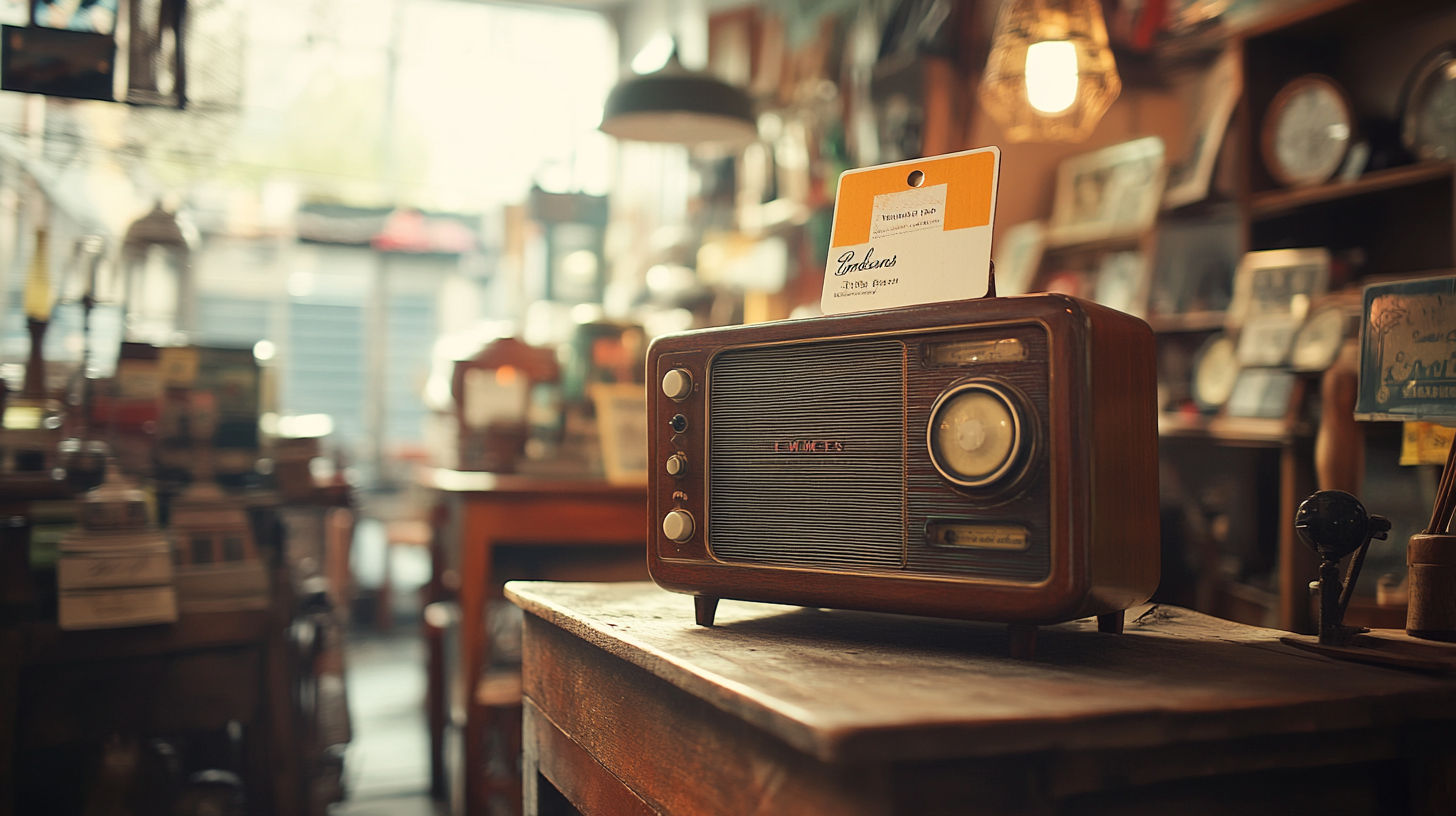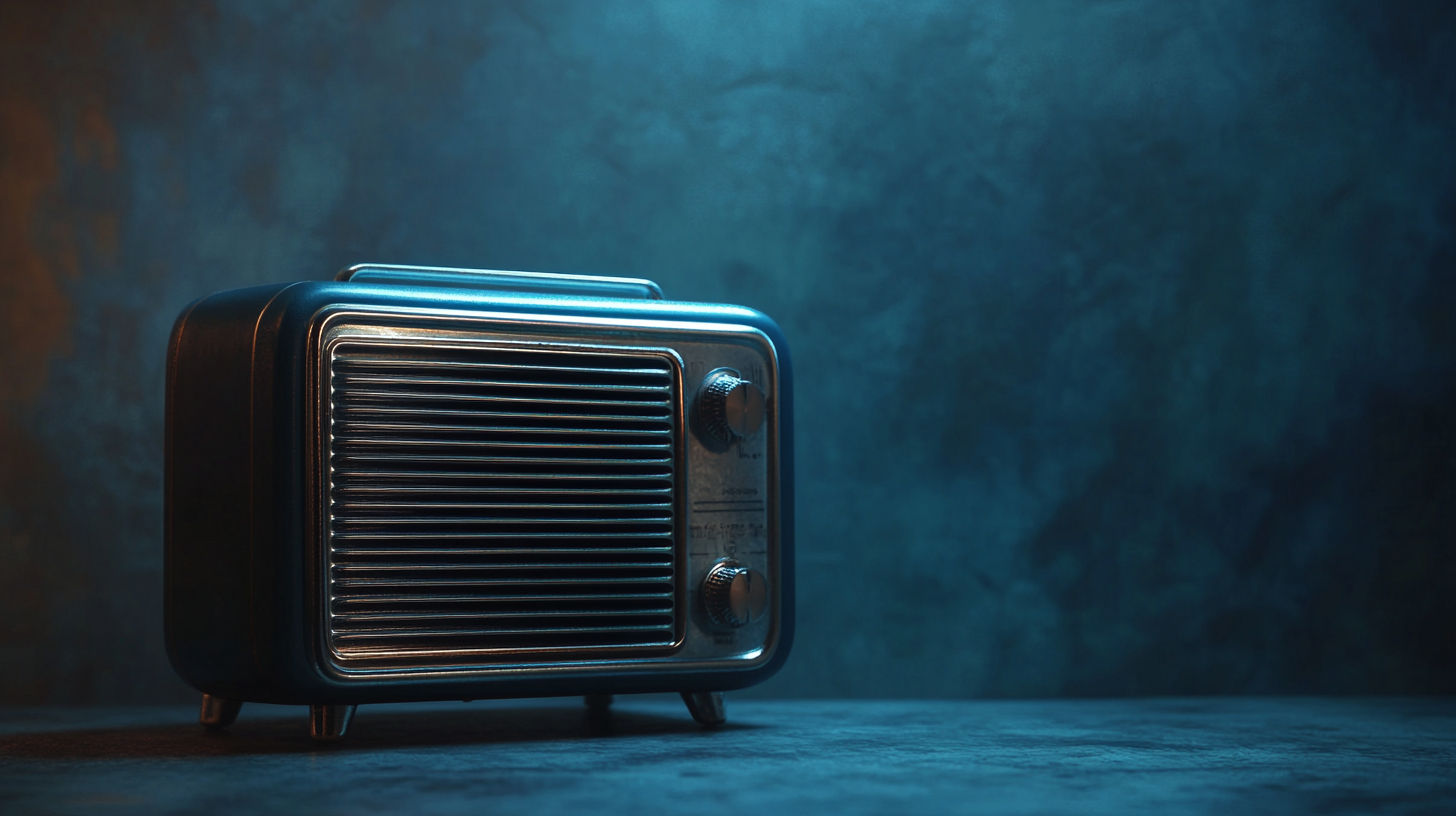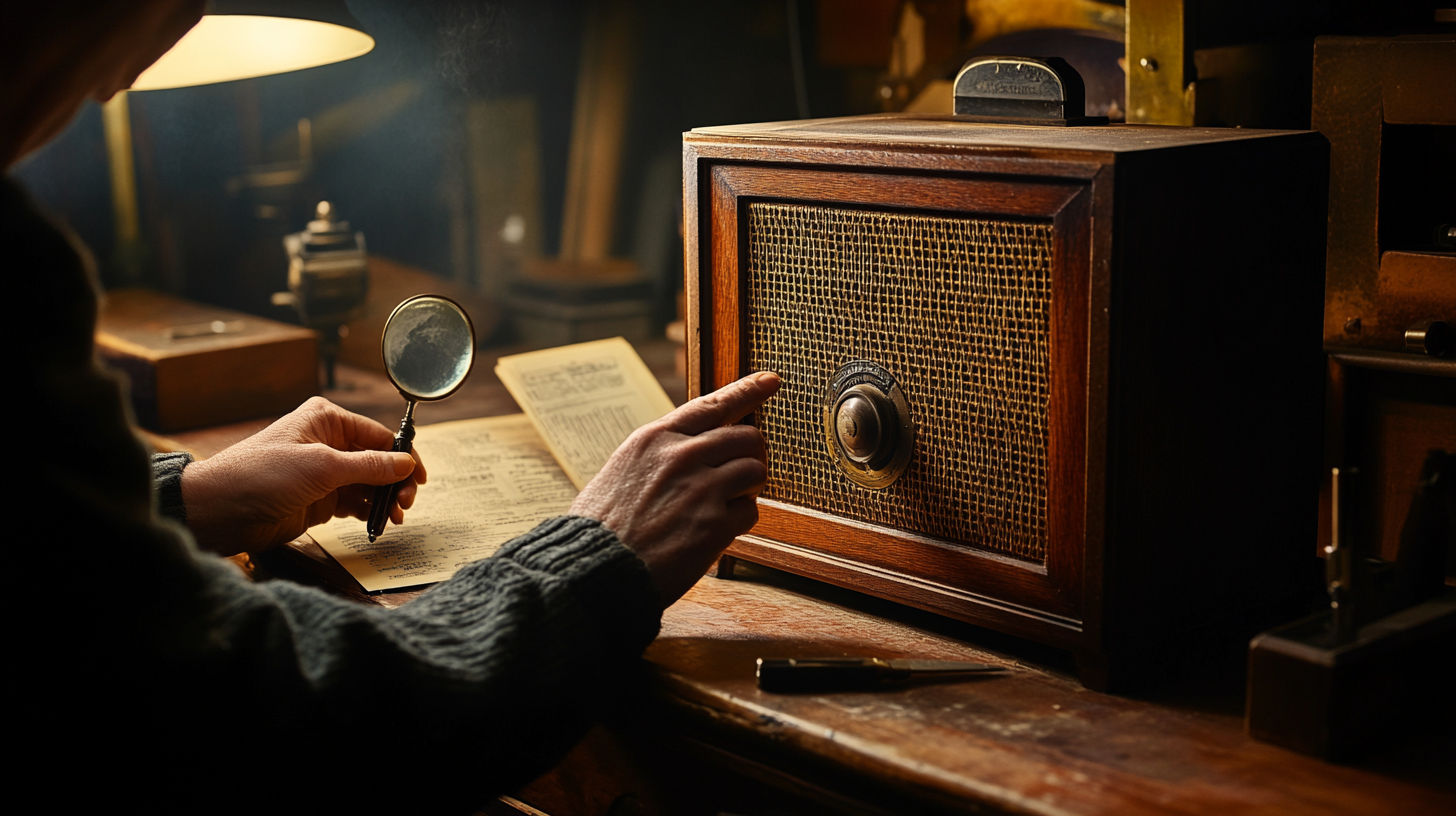Introduction to Antique Radio Valuation
Antique radios are more than just outdated technology—they represent innovation, artistry, and cultural history. Whether you’ve inherited a family heirloom, discovered an old radio in the attic, or are an avid collector looking to expand your collection, understanding the true value of these vintage devices can be challenging.
The antique radio market varies widely, with prices ranging from just a few dollars for common models to several thousand for rare specimens. This comprehensive guide will help you navigate the complex world of antique radio valuation, providing expert insights on what makes these vintage communication devices valuable and how to determine the worth of your specific model.
Understanding the Antique Radio Market
The antique radio market is primarily driven by collectors and enthusiasts rather than practical users. Most vintage radios require restoration to function properly, and many collectors value them more for their historical significance and aesthetic appeal than their operational capabilities.
According to experts, most vintage radios fall into a relatively modest price range. As noted in a comprehensive Reddit guide for beginners, the majority of antique radios are worth somewhere between $5 and a few hundred dollars. However, certain rare models, particularly those from the 1920s through 1940s, can command much higher prices.
Antique Radio Market Statistics
Key Factors Affecting Antique Radio Value
Age and Era
Radios from certain periods are generally more valuable than others. Early tube radios from the 1920s and 1930s often command premium prices due to their historical significance, while transistor radios from the 1950s and 1960s have their own collector market.
Antique Radio Eras and Their Value Impact
- 1920s
Early Radio Era
Battery-powered radios and early commercial models. High historical value but relatively rare. Prices can range from $200-$1,000+ depending on condition and brand. - 1930s
Golden Age of Radio
Art Deco designs and wooden console models dominated. Among the most collectible era with values ranging from $150-$2,000 for premium models. - 1940s
Wartime and Post-War
Bakelite and plastic cases became common. Many patriotic designs. Values typically range from $50-$500. - 1950s
Transistor Revolution
Introduction of portable transistor radios. Value varies widely from $20-$1,000 depending on rarity and design. - 1960s-70s
Modern Vintage
More common and generally less valuable unless rare designs or brands. Typically worth $20-$200.
Brand and Model
Certain manufacturers built reputations for quality, innovation, or exceptional design, making their radios more desirable to collectors. According to Catawiki, the Zenith Stratosphere is considered one of the most sought-after vintage radios in the world.
Condition
The physical and operational condition of an antique radio significantly impacts its value. Radios in original, working condition command much higher prices than those with damage or modifications.
Antique Radio Condition Assessment
Use this checklist to evaluate your radio's condition and its potential value
- Cabinet is free from cracks, chips, or repairs
- Original finish is intact and not refinished
- All knobs and controls are original and present
- Dial glass and face are intact without damage
- Electronic components appear undamaged
- Radio powers on and receives stations
- Speaker produces clear sound without distortion
- Original documentation or packaging is present
Rarity and Scarcity
Limited production runs, unusual designs, or models that simply didn’t survive in large numbers are naturally more valuable. As Radio World notes, certain radios with unique designs and features can fetch significantly higher prices.
Materials and Design
The materials used in radio construction greatly influence value. Radios with Catalin (a colorful resin) cabinets are among the most valuable due to their distinctive appearance and the fact that Catalin deteriorates over time, making well-preserved examples increasingly rare.
Antique Radio Values by Cabinet Material
Average market values based on cabinet construction material
</tbody>
</table>
Historical Significance
Radios associated with significant historical events or technological milestones often carry a premium. First-generation models of new technology or radios from pivotal historical periods have additional collector appeal.
How to Identify Your Antique Radio
Identifying an antique radio correctly is the first step in determining its value. According to AntiqueRadio.org, there are several key areas to examine when trying to identify an old radio:
Look for Identifying Marks
Check for manufacturer names, model numbers, and patent information. These are often found on the back panel, inside the cabinet, or on a tag or plate attached to the chassis.
Examine Component Markings
If external identifiers are absent, internal components can provide clues. Look for dates on capacitors, transformers, or tube shields.
Analyze Cabinet Design and Materials
Cabinet styles evolved over time and can be indicative of specific eras:
- 1920s: Often simple wooden boxes or ornate wooden cabinets
- 1930s: Art Deco styling, wooden consoles
- 1940s: Introduction of Bakelite and plastic materials
- 1950s-60s: More streamlined designs, increased use of plastic
Check Dial Markings
Frequency ranges and dial markings changed over time and can help narrow down the manufacturing period:
- Pre-1941: Often don’t include FM bands
- 1941-1953: May have “War Emergency” frequency markings
- Post-1953: Usually include expanded FM bands

Identify Tube Types
Vacuum tubes evolved over the decades and can help determine age:
- Early 1920s: Often used directly heated triodes
- Late 1920s-1930s: Introduction of indirectly heated cathodes
- 1930s-1940s: Miniature tubes became popular
- 1950s-1960s: Transition to transistors began
Resources for Identification
Several references can help with accurate identification:
Radio Identification Resources
RadioMuseum.org Database
Extensive catalog of vintage radios with detailed information on models, manufacturers, and technical specifications.
Nostalgia Air Schematics
Archive of radio schematics and service information that can help identify specific models.
AntiqueRadio.org Identification Guide
Comprehensive guide to identifying vintage radios with detailed explanations and examples.
Radio Attic's Price Guide
Extensive database of sold radios that can help with both identification and valuation.
Valuation Methods for Antique Radios
Reference Price Guides
Several specialized price guides focus on antique radios:
- The Complete Price Guide to Antique Radios by John Slusser, available on Amazon, is considered a standard reference in the field.
- Radio Attic’s Price Guide at radioattic.com documents actual sale prices of over 19,000 radios since 2005.
- Collector’s Guide to Antique Radios provides illustrated values for numerous models.
Online Auction and Sales Data
Current market values can be found by researching:
- Recent completed eBay auctions for similar models
- Sales at specialized auction houses
- Prices at antique radio swap meets and collector fairs

Consult with Experts
For rare or particularly valuable radios, consider:
- Appraisals from antique radio specialists
- Evaluations at radio collector club meetings
- Assessments from reputable antique radio dealers
- Professional appraisal services from auction houses
Value Adjustment Factors
When researching comparable sales, adjust for these factors:
Value Adjustment Factors
Increase or decrease from base value depending on condition and features
| Category | Price | Notes |
|---|---|---|
| Catalin/Colored Resin | $500-$5,000+ | Highly prized for vibrant colors; rare in good condition |
| Wooden Console | $150-$1,500 | Value increases with ornate cabinetry and details |
| Bakelite | $50-$500 | Common in 1930s-40s tabletop models |
| Metal | $40-$300 | Often found in military or utility models |
| Plastic | $20-$200 | Common in later models; unique designs worth more |
</tbody>
</table>
Most Valuable Antique Radio Categories
1. Catalin and Colored Plastic Radios
These radios, particularly from the 1930s and 1940s, feature colorful resin cabinets that often came in vibrant colors like red, blue, green, and yellow, or marbleized patterns. According to Radio World, Catalin radios are highly sought after by collectors due to their unique appearance.
2. Pre-1930 Battery Sets
Early radios from the 1920s, particularly those that preceded the mass production of AC-powered sets, represent the dawn of radio broadcasting and carry significant historical value.
3. Iconic Art Deco Designs
Radios from the 1930s with distinctive Art Deco styling—featuring symmetrical designs, bold curves, and geometric patterns—appeal to both radio collectors and Art Deco enthusiasts.
4. Rare Manufacturer Models
Certain manufacturers’ limited production models command high prices:
- Zenith Stratosphere models (considered among the most valuable)
- Sparton “Bluebird” mirror radios
- E.H. Scott custom chrome-chassis models
- Rare Atwater Kent early models
5. Notable Transistor Radios
Early transistor radios, particularly first-generation models from the 1950s in original packaging, have a dedicated collecting niche. Japanese brands like Sony, Toshiba, and Standard can be especially valuable.
High-Value Antique Radio Models
Examples of particularly valuable vintage radio models and their recent market values
| Category | Price | Notes |
|---|---|---|
| Working vs. Non-Working | 30-50% decrease | Non-working radios typically sell for significantly less |
| Original vs. Restored | 20-40% premium | All-original radios command higher prices than restored ones |
| Cabinet Condition | 25-60% impact | Cracks, chips, or veneer damage significantly reduce value |
| Original Documentation | 10-25% premium | Original manuals, warranty cards, and packaging add value |
| Rare Color Variations | 50-300% premium | Unusual cabinet colors can multiply value, especially for Catalin models |
</tbody>
</table>
Where to Sell Antique Radios
Online Marketplaces
- eBay: Largest audience but higher fees and shipping challenges
- Etsy: Good for higher-end, restored vintage radios
- Facebook Marketplace: Local sales with lower fees but smaller audience
- Specialized radio collector forums: Targeted audience but smaller reach
Physical Venues
- Antique stores: Often work on consignment with 30-50% commission
- Radio collector meets and swap fairs: Direct sales to knowledgeable buyers
- Auction houses: Best for rare, high-value models; significant commission fees
- Radio collector clubs: Connect directly with potential buyers through club newsletters and meetings
Tips for Selling Successfully
- Document condition thoroughly: Include clear photos of all sides, controls, and any damage
- Research comparable sales: Price realistically based on recent sales of similar models
- Provide accurate details: Include manufacturer, model number, year, and history if known
- Disclose restoration work: Be transparent about any repairs or modifications
- Consider the shipping challenges: Large console radios may be better sold locally
- Get professional help for valuable items: Auction houses or specialized dealers for rare models
Restoration and Its Impact on Value
Cosmetic Restoration
For cabinet restoration, the collector market generally values:
- Original finishes: Even with some wear, original finishes are preferred by serious collectors
- Sympathetic restoration: Repairs that maintain period-appropriate appearance
- Documentation: Keeping records of any restoration work performed
Electronic Restoration
The approach to the radio’s internal components requires careful consideration:
- Safety first: Always address potentially dangerous issues like deteriorated power cords
- Minimal intervention: Replacing only what’s necessary to restore functionality
- Reversible modifications: Making changes that can be undone if needed
- Original parts: Using period-correct components where possible
When Restoration Adds Value
Restoration can increase value when:
- The radio is common and not of museum-quality importance
- Work is done to professional standards
- Original appearance is maintained or properly restored
- Electronics are safely restored to working condition
When Restoration Decreases Value
Restoration can decrease value when:
- Rare or museum-quality pieces are altered from original condition
- Non-original materials or inappropriate techniques are used
- Modern components visibly replace period components
- Cabinet refinishing removes original patina or character
Common Questions About Antique Radio Values
Do antique radios have any value?
Yes, antique radios do have value, though it varies widely. As noted by Radio World, most common vintage radios are worth between $5 and a few hundred dollars. However, certain radios—especially those with unique designs, superior build quality, or historical significance—can be worth significantly more.
Catalin radios with their vibrant, swirled colors are particularly sought after and can fetch premium prices. Rare models like the Zenith Stratosphere can sell for thousands of dollars. The value depends on factors including brand, model, condition, rarity, and historical significance.
What is the most sought after vintage radio?
According to collector resources, the Zenith Stratosphere is widely considered the most sought-after vintage radio. Produced in the 1930s by Zenith (founded in 1923), this model represents the pinnacle of radio design and engineering from the golden age of radio.The Stratosphere was an ultra-premium radio with exceptional sound quality, innovative features, and striking cabinet design. Due to its limited production and status as a luxury item even when new, well-preserved examples can command prices from $4,000 to well over $20,000 depending on condition.
Other highly sought-after models include the Sparton Bluebird mirror radios, E.H. Scott custom chrome-chassis radios, and Catalin cabinet radios in rare colors or unusual designs.
How do I know if my radio is antique?
To determine if your radio is truly antique, examine several key characteristics:
- Component markings: Look for manufacturer names, dates, or patent numbers on internal components
- Cabinet design: Compare your radio’s style to known eras (Art Deco for 1930s, etc.)
- Cabinet materials: Early 1920s radios typically used wood, Bakelite became common in the 1930s-40s, and plastic in later models
- Dial markings: Pre-1941 radios often don’t include FM bands
- Tubes: The presence and type of vacuum tubes can help date the radio
- Transistors: If your radio uses transistors instead of tubes, it likely dates from the 1950s or later
For more precise identification, consult resources like RadioMuseum.org or AntiqueRadio.org, which maintain extensive databases of vintage radio models and their characteristics.
Where can I sell vintage radios?
There are several viable options for selling vintage radios, each with its own advantages:
Online marketplaces: eBay reaches the largest audience but has fees and shipping challenges. Facebook Marketplace is good for local sales with lower fees.
Collector forums: Websites like Antique Radio Forum (antiqueradios.com) have classified sections where you can reach knowledgeable collectors.
Radio collector clubs: Local or national clubs often have swap meets or newsletters where members can buy and sell.
Antique stores and shows: Physical venues where radios can be displayed to interested buyers.
Auction houses: For rare or valuable models, specialized auction houses may be the best option to reach serious collectors.
As recommended by experienced collectors, the best approach depends on your radio’s value, condition, and how quickly you want to sell. For common models, local venues like flea markets may be easiest, while rare pieces might justify the fees associated with specialized auctions.
How much is a 1940s radio worth?
The value of a 1940s radio varies considerably based on several factors:
- Standard wooden table models: Generally $50-$200 depending on brand and condition
- Console floor models: Typically $100-$500, with premium brands commanding higher prices
- Catalin or colored plastic models: $500-$5,000+, with rare colors fetching premium prices
- Military or specialized models: $100-$1,000 depending on rarity and historical significance
- Premium brands: Zenith, Philco, RCA, and Scott models often command higher prices
Condition is critical—working radios with undamaged cabinets, original knobs, and intact dial glass are worth significantly more than incomplete or damaged examples. Radios with their original documentation, packaging, or promotional materials can see a 20-30% value increase.
For specific valuations, consult price guides like John Slusser’s series or check recent completed sales of similar models on auction sites.
Conclusion: Making Informed Decisions
Antique radios connect us to a fascinating period in technological and design history. While determining exact values can be complex, the research process itself often leads to a deeper appreciation for these vintage devices and the eras they represent.
For collectors, the joy often lies as much in the hunt and research as in the acquisition. For those looking to sell inherited or discovered radios, understanding the market helps ensure fair compensation while finding your radio a new home with an appreciative collector.
Whether your vintage radio is worth $50 or $5,000, its historical and cultural significance extends beyond its monetary value. These technological artifacts tell the story of how we communicated and connected across distances—a legacy worth preserving regardless of market price.
External Resources for Antique Radio Valuation
Radio Attic Price Guide
Comprehensive database of over 19,500 radios sold since 2005, including prices and dates reported sold.
Antique Radio Forums
Active community of collectors and enthusiasts sharing knowledge about identification, restoration and valuation.
RadioMuseum.org
Extensive database of historical radio models with technical details, photos, and documentation.
Canadian Vintage Radio Society
Educational resources about vintage radios including valuation guides and identification help.
How to Identify Old Radios
Detailed guide to identifying vintage radio models through component markings, cabinet design, and other characteristics.
Radio World: What to Do With That Old Antique Radio
Comprehensive article on determining value and options for antique radios.
eBay Collectible Tube Radios
Active marketplace for buying and selling vintage tube radios with current market prices.
Get a Professional Appraisal
Unsure about your item’s value? Our certified experts provide fast, written appraisals you can trust.
- Expert report with photos and comps
- Fast turnaround
- Fixed, upfront pricing
No obligation. Secure upload.
| Category | Price | Notes |
|---|---|---|
| Zenith Stratosphere (1930s) | $4,000-$20,000+ | Considered the "Holy Grail" for many collectors |
| Sparton 558 Bluebird (1936) | $3,000-$10,000 | Iconic blue mirrored Art Deco design |
| Fada 1000 "Bullet" Catalin (1940s) | $2,000-$7,000 | Especially valuable in rare colors like red or blue |
| Addison 2 "Waterfall" Catalin (1940) | $1,500-$5,000 | Distinctive curved design in various colors |
| E.H. Scott Philharmonic (1937-1942) | $2,000-$8,000 | High-end chrome chassis with custom cabinetry |
| Sony TR-55 Transistor (1955) | $1,000-$4,000 | Japan's first commercially successful transistor radio |




